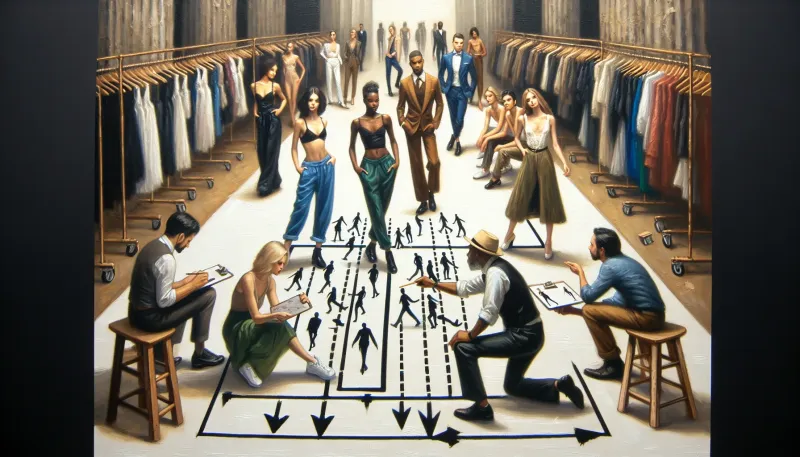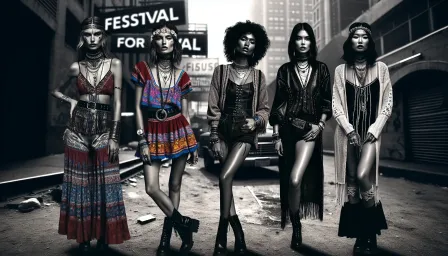Mastering Runway Show Choreography: Tips from Top Fashion Directors

Discover expert tips and strategies for mastering runway show choreography from top fashion directors. Enhance your show with professional guidance.
Runway show choreography is a crucial element in the fashion industry that can make or break a designer's presentation. The dynamics, timing, and overall flow of a runway show can greatly influence how the audience perceives the designs. This article, derived from the insights of top fashion directors, delves into mastering runway show choreography to ensure captivating and memorable performances.
Understanding Runway Show Choreography
Runway show choreography involves the precise planning and execution of models' movements, timing, and interactions on the catwalk. This aspect of fashion shows ensures that the presentation is visually appealing, seamless, and aligns with the designer's vision.
Crucial Elements of Effective Runway Show Choreography
1. Concept Development
The foundation of a successful runway show is a clear and compelling concept. Fashion directors emphasize the importance of understanding the designer's theme and vision. A strong concept guides all creative decisions, from model selection to music choices.
2. Music Selection
Music sets the tone and pace of the show. Selecting energizing, mood-enhancing tracks that complement the clothing line is vital. Synchronizing model walks and turns with musical cues can amplify the show’s impact.
3. Model Training
Even the best-designed collections fall flat without well-coordinated model movements. Training models to execute precise steps, pauses, and turns can be the difference between a good and a great show.
4. Timing and Pacing
Timing is everything in runway shows. Directors need to ensure that models enter and exit the stage in sync with the choreographed sequence. Pacing should be neither rushed nor sluggish, achieving a natural rhythm that highlights the garments.
5. Stage Layout
The physical layout of the runway and seating arrangement can significantly impact the choreography. Coordinating movement patterns according to the stage dimensions maximizes visual clarity and audience engagement.
Pro Tips from Top Fashion Directors
1. Pre-Show Rehearsals
Rehearsals are non-negotiable. Repeated run-throughs not only refine the movements but also build confidence among models and the production team. It’s also a chance to identify and address any potential issues.
2. Adaptability
Despite meticulous planning, unexpected challenges can arise. Directors recommend staying adaptable and having contingency plans. Flexibility in handling last-minute changes can differentiate a professional production from an amateur one.
3. Collaborative Approach
Runway shows are collective efforts. Directors stress the importance of collaboration with designers, stylists, lighting technicians, and stage managers. Clear communication and collective problem-solving can smooth the path to a successful show.
4. Attention to Detail
The smallest details, such as model spacing and eye contact, can elevate a show. Directors advise paying close attention to nuances that enhance the overall aesthetic and professionalism.
5. Audience Engagement
Directors agree that understanding the audience's perspective is critical. Choreography should be inclusive, ensuring all audience members have a good view and feel engaged throughout the presentation.
Addressing Pain Points in Runway Show Choreography
1. Overcrowded Runways
Overcrowded runways can lead to chaos and detract from the presentation. Directors suggest spacing models adequately and organizing entrances and exits to avoid congestion.
2. Inconsistent Model Performances
Consistency in model performance is essential. Regular rehearsals and thorough briefings help maintain uniformity in walking styles and pacing, ensuring a cohesive show.
3. Technical Issues
Technical glitches can disrupt the show’s flow. Directors recommend conducting technical runs with full lighting, sound, and stage adjustments to preemptively address possible problems.
4. Rigid Choreography
While planning is critical, being too rigid can hinder the show’s natural flow. Striking a balance between structured choreography and spontaneous elements can keep the audience intrigued and the models comfortable.
Conclusion
Mastering runway show choreography requires dedication, creativity, and precise execution. By adhering to these expert tips from top fashion directors, you can curate a runway experience that captivates the audience and impeccably showcases the designer’s work. Remember, the goal is to create a harmonious blend of fashion and performance, leaving a lasting impression on all who attend.



























